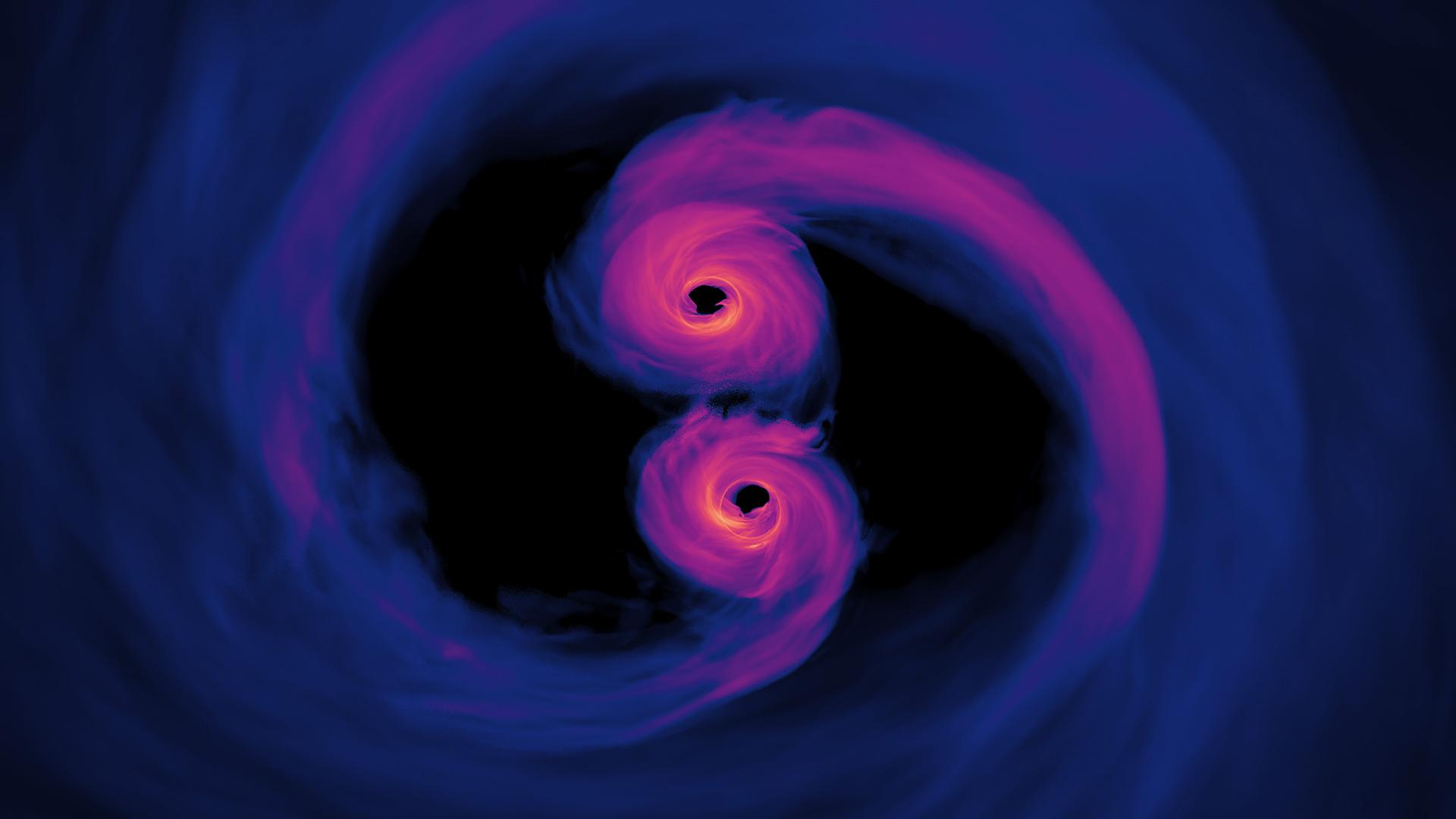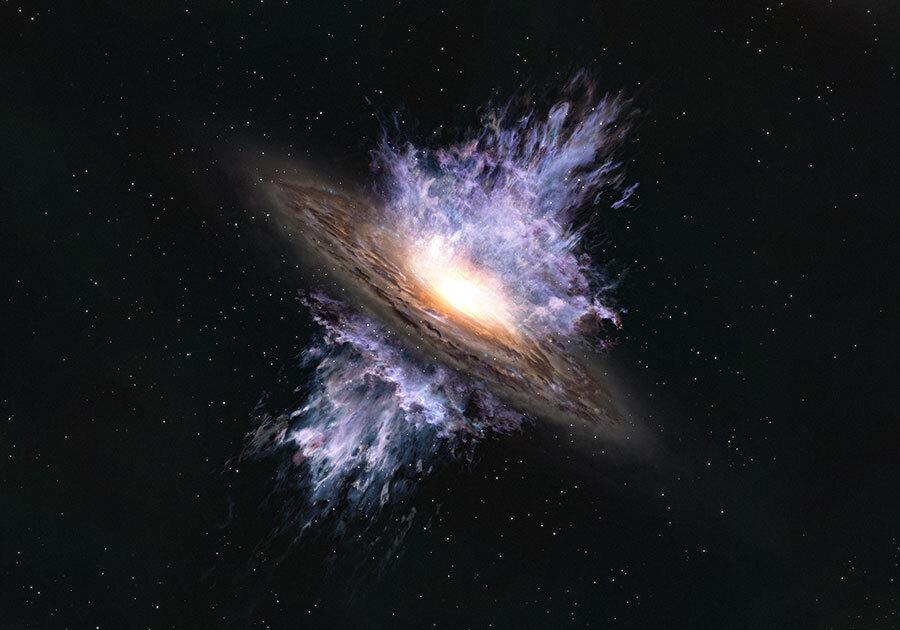1. This is NOT what an atom really looks like.
MICHELLE THALLER: Calling what an electron is and where it is around an atom an "orbit" is actually very misleading. In truth electrons don't move around a nucleus the same way that planets move around a star at all. It's very, very different and part of that has to do with what an electron really is. Elementary particles are not tiny, tiny little balls that are actually moving through space. They're more properly described as waves and an electron does not exist in only one location around an atom. It actually exists as a wave. And what that means is that there are volumes around the nucleus of an atom that an electron will fill in. A single electron can actually be an entire sphere around the nucleus of an atom, or these orbitals as we call them, but again I caution you nothing is actually moving around like a planet around a star. Some of these orbitals are shaped like dumbbells and a single electron actually fills out a volume that looks like a dumbbell, or sometimes they look like a disc. So these actually are mathematical solutions which show you where the probability of finding this electron is around an atom. We call these electron shells and it's not that a single electron is moving around inside the shell. It's in the whole shell all at once. The electron actually fills in that volume and all you're looking at is a probability area of where that electron may be. So despite our depictions of atoms with the nucleus in the middle and electrons going around the outside, reality is nothing like that. Electrons form these volumes and some of those volumes even go through the nucleus. Some of these dumbbells actually have electrons existing inside the nucleus as well. What an atom really is, is far more complicated than our artistic depictions of it, far more mysterious and I think really wonderful. One of the best things to study in quantum mechanics is how electrons form these volumes.
2. The Big Bang wasn't an explosion. Visualize it like this instead.
Now when you hear the term Big Bang that implies an explosion, and we all know how explosions work from our experience. Things actually fly out from a common center. And one of the things is that scientists really don't like describing the Big Bang as an explosion at all. That sort of sets you up in the wrong direction right away because you could imagine that there are galaxies all flying apart away from each other, away from a common center, and flying out into empty space. And the universe we observe is absolutely nothing like that. For example, the whole volume of the universe that we can see with the Hubble space telescope. We can see to a distance of nearly 13 billion lightyears. All of that volume is filled with galaxies. There is no empty center to the universe. And the other thing that we don't observe and we're pretty sure that nobody else ever could either is being on the edge of that. Being on a galaxy right on the edge of expansion and seeing all of the galaxies in one direction because you're looking inside and nothing but empty space on the outside. Space never looks like that. All around us we see galaxies. The universe is filled with them. So, what's really going on here? And this really gets at the crux of what the Big Bang was. The Big Bang wasn't an explosion of matter. It was an expansion of space itself. So that simply means that any amount of space in the universe is expanding and everything is getting farther away from everything else. I know that's very hard to visualize. Some people talk about blowing up a balloon and this always, to me, can put you in the wrong direction because they say aha, a balloon has an empty center and everything expands away from it. What they haven't told you is you need to pay attention just to the surface of the balloon. Pretend that there's no such thing as inside or outside the balloon. Just the two dimensional surface of the rubber. As you blow into it that expands in every direction. If you were to draw little points on the surface of the balloon every little point would start getting farther away from every other little point. But if you were a two dimensional creature that could only travel on the surface of the balloon, you could only shine a light. You couldn't possibly even know about what's up or what's down. If you were completely two dimensional you would see every point expanding away from every other point but there would be no empty center.
So the question is in our three dimension universe, do we need another dimension to expand into if this is the case? And the answer honestly is no. Space itself can simply get larger. We don't know the extent of the entire universe. If you want to think of the universe instead of the surface of a balloon as a big rubber sheet. You can just keep stretching that rubber sheet. Stretching it apart, everything's getting farther and farther away from each other but there's no empty center. There's still rubber everywhere you go and that rubber is just getting bigger. Now, we are pretty sure there's no edge to the universe. Is the universe infinite? We honestly don't know. Maybe the universe does have some larger shape that we're not aware of, but the thing to really remember is that there is no empty center. The Big Bang happened at every point in space. All of space began to expand at once. And so that means that we look out into the distant universe and we see pretty much all of the galaxies moving away from us. And if you point at any galaxy you want in the sky and put yourself there, you would see everything expanding away from you because space itself is expanding. There is no empty center to the universe.
3. The speed of light is more than a record-breaking speed.
You may have heard that nothing with mass can possibly go at the speed of light. The only things that travel at the speed of light are photons, pure energy light, the speed of light. Nothing with any mass at all can travel at the speed of light because as it gets closer and closer to the speed of light its mass increases. And if it were actually traveling at the speed of light it would have an infinite mass. So think about that. Even if you had a tiny little particle that was say billions of times less massive than an electron. Just a tiny, tiny little piece of mass. If for some reason that tiny thing accelerated to the speed of light it would have an infinite mass and that's a bit of a problem. So, let's talk about this. One of the things that you really have to realize is the speed of light is very, very special. It's not just simply a speed of something moving through space. As you go faster and faster and closer to the speed of light, time itself begins to slow down and space begins to contract. As you go close to the speed of light the entire universe becomes smaller and smaller until it basically just becomes a single point when you're going at the speed of light. And time as you go closer to the speed of light gets slower and slower until basically time is a single point at the speed of light. Light does not experience space or time. It's not just a speed going through something. All of the universe shifts around this constant, this speed of light. Time and space itself stop when you go that speed. So, the reason you can't accelerate to the speed of light and the reason we say you have an infinite mass gets a little complicated because the idea that mass actually is a measurement of energy. You may remember Einstein's famous equation E = mc2. Energy equals mass times the speed of light squared. Energy and mass are equivalent. Mass is basically a measurement of how much energy there is in an object.
When you're moving you have the energy of your motion, too. That's called kinetic energy. Energy of motion. So, E = mc2 now your mass has not just the stuff that's in you, but also the energy of your motion. And that's why mass seems to increase as you go faster and faster and closer to the speed of light. It's not that you're actually getting any heavier. The increase in mass is something that's only observed by people that are watching you go by. If you're on a spaceship going very fast at the speed of light you don't notice anything getting heavier. You are on your spaceship, you can jump up and down, you can skip rope. You can do whatever you want. You don't notice any change at all. But if people try to measure your mass as you go by they not only are measuring your rest mass, your mass when you were still, but this added energy of this huge speed that you have through space. And that's called a relativistic mass. It's a complex idea to think that mass itself is a measurement of energy so that changes depending on how fast you're going. If you were to slow down on your spaceship you would not keep that mass. You would go back to being the same mass you were before you started moving that quickly. So, as you can see it's a complicated answer depending on how you define mass because as you're going very close to the speed of light and you have a huge speed you need to take into account that energy because of the equation E = mc2.






